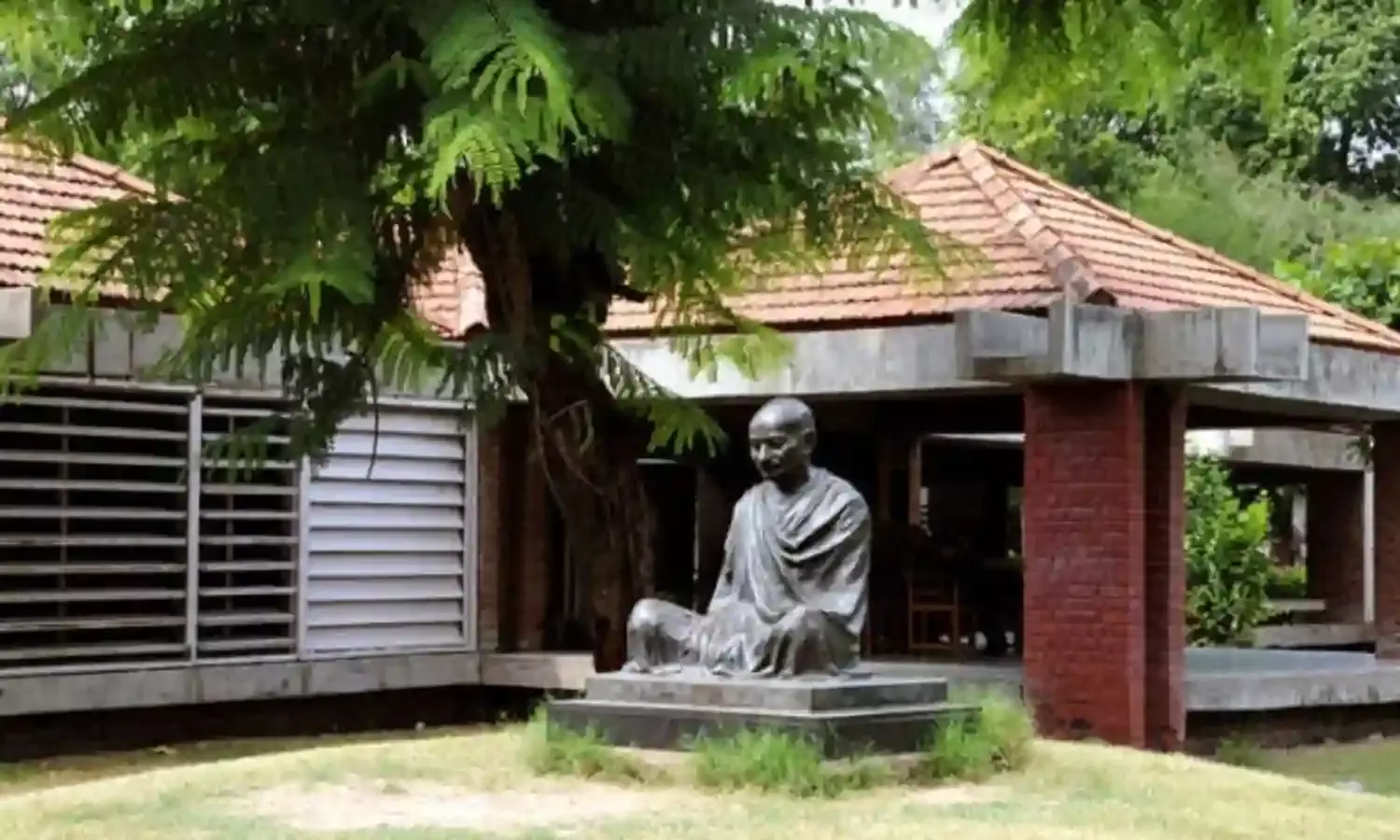Gandhi’s Grandson And Others Write to PM on Sabarmati Ashram Development
Letter by eminent citizens

A group of 130 eminent journalists, writers, retired civil servants, scholars, including Mahatma’ Gandhi’s grandson Rajmohan Gandhi, have expressed their reservation against the government’s decision to redevelop the Sabarmati Ashram to a ‘world-class’ tourist destination.
In a press release, the signatories called the Rs.1200 Crores ‘Gandhi Ashram Memorial and Precinct Development Project’, a ‘Gandhi theme park’ at best and ‘a second assassination’ at worst.
Prime Minister Modi government is all set to redevelop the Sabarmati Ashram, including the Hriday Kunj—the residence of Gandhi and Kasturba. The 54 acres project would have a budget of Rs. 1200 crores and would have new museums, amphitheatre, VIP lounge, shops, food court and other things.
Apart from Rajmohan Gandhi, the signatories include journalist Prakash Shah, writers Ram Puniya and P. Sainath, historian Ramachandra Guha, and others.
The signatories argue that the revamping of the Gandhi Museum is “in keeping with the present government’s strategy to appropriate and commercialize all Gandhian institutions in the country. The worst example of this can be seen in Sevagram, but the most frightening aspect is government control over all Gandhian archives. As Mahatma Gandhi was murdered by elements whose ideology still inspires some of those in power in India, this danger cannot be overlooked.”
They added that the commercialization of the place would trivialize the sanctity and importance of the present-day Ashram, mainly Hriday Kunj, surrounding buildings, and the museum.
“Hriday Kunj, other historical buildings, and present museums, even if they remain untouched, will no longer be central but pushed into a corner by the new museum, amphitheatre, food courts, shops, etc,” the signatories say.
If the government decides to go through with this project, the signatories say that the most authentic monument of Gandhi and our freedom struggle would be lost to vanity and commercialization.
The signatories add, “We must collectively oppose any government takeover of Gandhian institutions, while ensuring that the government continues to use public money for the proper maintenance and upkeep of such institutions, in consultation with eminent Gandhians, historians and archivists from India and around the world.”
The full statement reads:
Gandhi’s Ashram at Ahmedabad, known as Sabarmati Ashram, is an unusual monument of international importance. It was Gandhi’s home from 1917 to 1930. He led the famous Dandi March from the Ashram and pledged not to return to the Ashram until independence was attained.
After the salt march, Gandhiji disbanded the Ashram as a part of the freedom struggle in 1933. After Independence Gandhi’s associates and followers formed Sabarmati Ashram Preservation and Memorial Trust to protect the buildings and archival possessions of the Ashram for posterity. There were five more trusts under the Ashram. They conduct their activities independently. Sabarmati Ashram Preservation and Memorial Trust looks after the buildings including Hriday Kunj—the residence of Gandhi and Kasturba.
Simplicity and Sanctity
Hriday Kunj and the memorial museum greets thousands of visitors coming from all parts of the world daily in truly Gandhian fashion, without frisking or security check or sight of armed persons. The visitors also feel touched and inspired by the aesthetics, openness, and sanctity of the place. The museum building designed in the early 1960s by Charles Correa reflects all the above-mentioned values and comes across as an integral part of the premises. Anyone passing by the adjoining road can drop in for a brief visit to Hriday Kunj or can have a glimpse of the museum as per convenience and available time.
Proposed Plan
The present government is all set to ‘reclaim’ the ‘visual wholesomeness, tranquility and uncluttered environment of 1949’ and make it a ‘world-class’ tourist destination spread over 54 acres. It has announced a budget of Rs.1200 Crores for ‘Gandhi Ashram Memorial and Precinct Development Project’. There will be new museums, an amphitheater, VIP lounge, shops, food court among other things in the newly created ‘world class’ memorial as per the newspaper reports.
Reports say that the project will be under the direct supervision of the Prime Minister and the Chief Minister. This is in keeping with the present government’s strategy to appropriate and commercialize all Gandhian institutions in the country. The worst example of this can be seen in Sevagram, but the most frightening aspect is government control over all Gandhian archives. As Mahatma Gandhi was murdered by elements whose ideology still inspires some of those in power in India, this danger cannot be overlooked.
What does this mean effectively?
- The proposed plan severely compromises and trivializes the sanctity and importance of the present-day Ashram, mainly Hriday Kunj, surrounding buildings, and the museum.
- The simplicity of the Ashram will be completely lost in a Rs.1200 Crore project.
- Hriday Kunj, other historical buildings, and present museums, even if they remain untouched, will no longer be central but pushed into a corner by the new museum, amphitheater, food courts, shops, etc.
- Easy access to Hriday Kunj and the present Museum will be blocked as the road passing by it will be closed. The new entrance will have at least a VIP lounge and a new museum before Hriday Kunj and the current museum.
- Lakhs of Indians, specially school children, as well foreign visitors come to Sabarmati Ashram every year. The place has never needed a ‘world-class’ makeover to attract tourists. The charisma of Gandhi along with the authenticity and simplicity of the place has been enough.
- The proposed plan at best envisions a ‘Gandhi theme park’ and at worst ‘a second assassination’.
- In short, if the project going through, the most authentic monument of Gandhi and our freedom struggle will be lost forever to vanity and commercialization.
We must collectively oppose any government takeover of Gandhian institutions, while ensuring that the government continues to use public money for the proper maintenance and upkeep of such institutions, in consultation with eminent Gandhians, historians and archivists from India and around the world.



